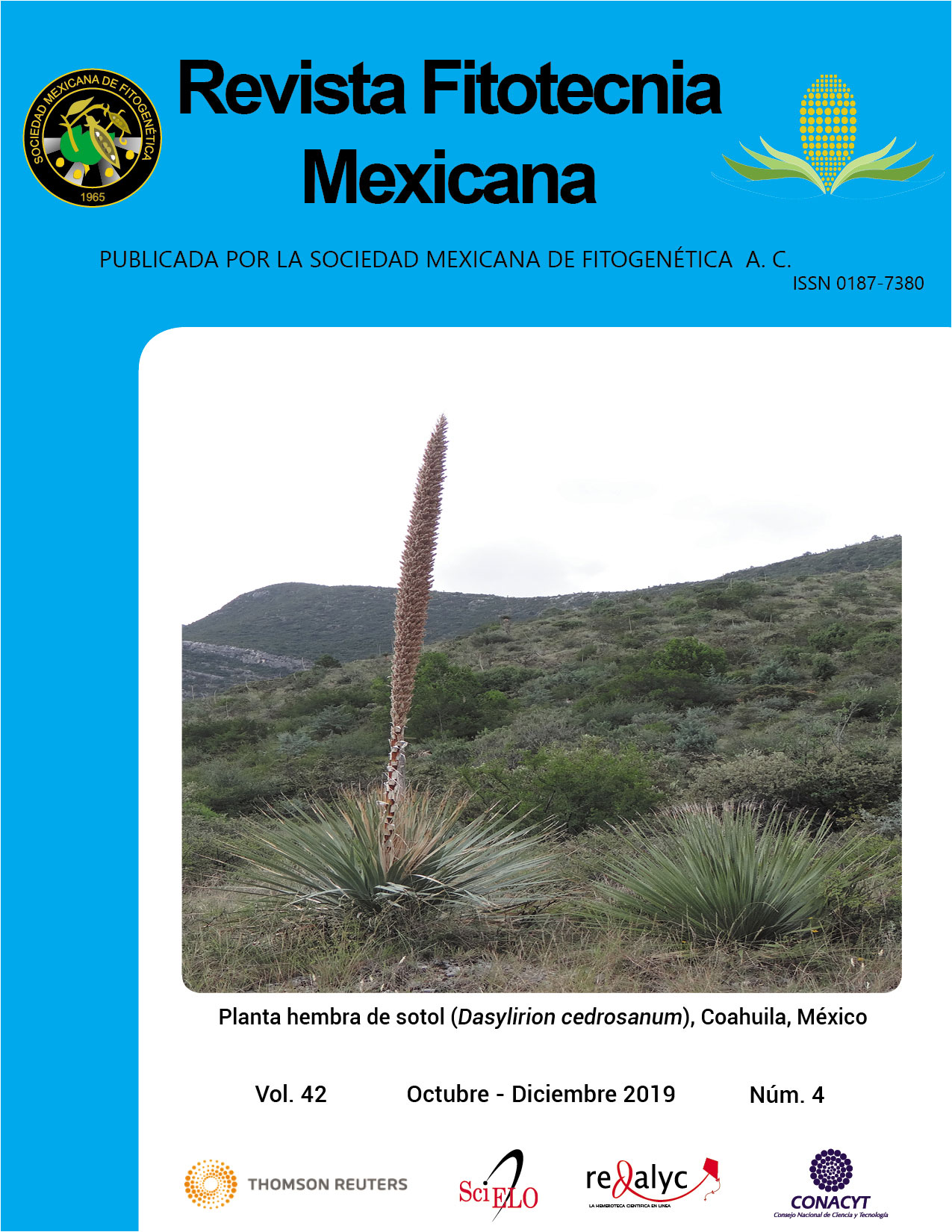NATIVE ARBUSCULAR MYCORRHIZAL FUNGI FROM THE RHIZOSPHERE OF Agave cupreata AND THEIR EFFECT ON Agave tequilana GROWTH
Main Article Content
Abstract
Blue agave (Agave tequilana F.A.C. Weber var. Azul) is an important crop for Mexico, from which tequila is made. In 2018 1,138,800 t of agave were produced under aproduction system where the use of agrochemicals has become widespread; in particular, the excessive use of chemical fertilizers generates problems of environmental impact in the producing areas. An alternative to solve this problem is the use of soil microbial resources to reduce this impact. The use of arbuscular mycorrhizal fungi (AMF) as biofertilizers is a functional alternative in other crops that could be implemented in the production of blue agave. The aim of this research was to evaluate the effect of native mycorrhizal consortia isolated from the rhizosphere of A. cupreata from Michoacán on the growth of blue agave. An experiment was conducted under a randomized complete blocks design where eight AMF consortia, a commercial inoculum (Rhizophagus intraradices) and a control (without AMF) were evaluated on A. tequilana seedlings. The experiment was maintained for 300 d under greenhouse conditions and, at the end, growth and microbiological variables were analyzed; in addition, mycorrhizal dependency and the Dickson index were calculated as parameters of plant quality. Significant differences (Tukey, P ≤ 0.05) were found in the growth traits of agave plants when inoculated with AMF consortia compared to control plants. The agave plants inoculated with the native consortium Barranca de las Nueces showed greater growth and Dickson index, with a mycorrhizal colonization of 49 % and a mycorrhization dependency of 62 %, as well as the highest spore density (244 spores 100 g-1 of substrate). Results suggest that AMF could be a biotechnology alternative in the agricultural production process of blue agave.

